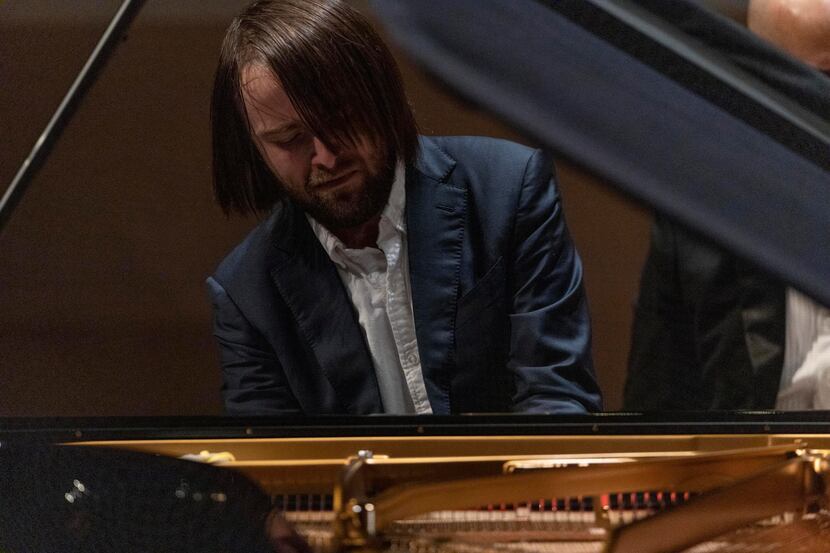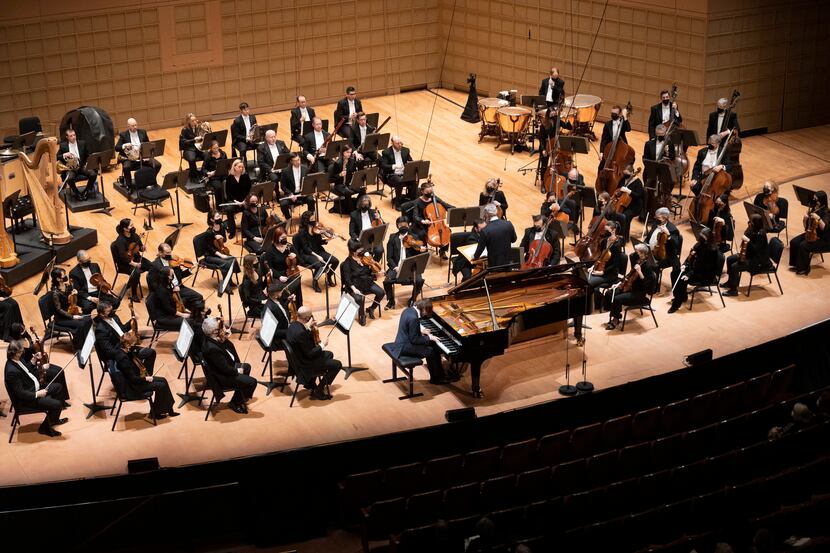The Dallas Symphony served up two meaty works, without an appetizer, in Thursday’s concert at the Meyerson Symphony Center. Brahms’ First Piano Concerto was paired with Austrian composer Franz Schmidt’s Fourth Symphony.
The big draw of the evening was the globetrotting pianist Daniil Trifonov. Noted for his performances of Russian romantic repertoire, he’s even written music influenced by that tradition.
Based on Thursday’s concert, Trifonov is also adept in German romantic fare. He demonstrated a sure grasp of the concerto’s structure, organically building one phrase into the next. His sparing tempo liberties always felt appropriate.
Trifonov took a determined approach to declarative episodes in the first movement. He revealed another side of his musical personality in the slow movement, rendering gentle chorale textures with a pearly touch.
Tearing into the finale, he displayed steely reserve in baroque-like counterpoint and easily tossed off rhapsodic flourishes. As an encore, he offered a tender transcription of Bach’s Jesu, Joy of Man’s Desiring.
Led by music director Fabio Luisi, the orchestra helped bring out the many changes in mood. But Trifonov and the DSO musicians sometimes had coordination issues. These would have likely been improved if Trifonov had looked up more often at Luisi.

Schmidt, who lived from 1874 to 1939, enjoyed considerable success in his career. But he fell out of favor in the mid-20th century partly because his conservatively tonal style seemed increasingly old-fashioned. His music remains generally unknown outside Austria and Germany, though the Fourth Symphony — composed in 1933 — occasionally appears on U.S. programs.
Conceived as a requiem for his 30-year-old daughter, who died in childbirth, the 45-minute symphony unfolds in one continuous movement with four distinct sections. Much of the music is relentlessly tragic and dense. An animated scherzo provides the main exception.
A champion of Schmidt’s work, Luisi has recorded all the composer’s symphonies as well as the oratorio, Das Buch mit sieben Siegeln (The Book with Seven Seals).
Luisi proved to be a passionate advocate for the symphony, presenting about as strong a case as possible for a rather tiring work. He built up passages over time into rousing climaxes, before rapidly deflecting the tension. He also made bold tempo changes, and the orchestra closely followed his direction.
Solo contributions from trumpeter L. Russell Campbell, English hornist David Matthews and cellist Theodore Harvey were assured and skillfully shaped.
Still, the piece remained a tough proposition. Long stretches meander aimlessly and melodies are too often repeated between parts. Whereas the Brahms concerto is a paragon of concision, Schmidt’s symphony is a study in verbosity.
Details
7:30 p.m. Jan. 20-22 and 3 p.m. Jan. 23 at Meyerson Symphony Center, 2301 Flora St. $34 to $180. Video stream will be available Feb. 1. Single concert $10; season pass $125. 214-849-4376, dallassymphony.org.

